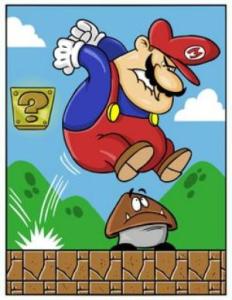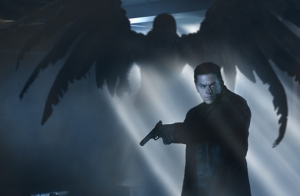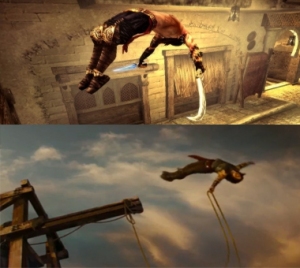Since the release of the critically panned Super Mario Bros. film in 1993, video game-movie adaptations have garnered a negative reputation from both moviegoers and gamers alike. Moviegoers wonder how such a medium can even be transformed into film, while gamers despise seeing their beloved experiences ruined by subpar iterations.
The discussion has raged for decades now; why is it that, for the most part, films based on video games tend to be poorly made and even more poorly received? Is it simply due to a misguided cash-grab philosophy or does the problem run deeper?
In reflecting upon the history of video game-movie adaptations, three particular factors stand out as thorns in the side of effective production: the loss of interactivity, a lack of appreciation for the source material, and a flawed focus on including video game tropes. It is due to these three primary factors that video games have so far failed to capture a secure place in the minds of moviegoers.

Interactivity is the defining characteristic of the video game that separates it from all other forms of entertainment. Rather than watching a television show or reading a book, gamers are playing games; this act of playing goes beyond mere button presses, however, to include hand-eye coordination, critical thinking, and even emotional investment.
Simply put, it is impossible to see a video game through to the end without input from the player, in contrast to other mediums, which will always proceed with or without a willing participant. It should come as no surprise then that the principal reason why video game-movie adaptations tend to fail is due to the loss of such interactivity.
Video games are designed from the ground up with players in mind, the mechanics tweaked and refined to ensure an enjoyable interactive experience; movies, on the other hand, are designed to be witnessed by viewers, the techniques meant to express theme or expose the director’s message. In attempting to merge these two unique entertainment mediums, that sense of interactivity is inevitably lost in translation.
Compared to the actual thrills of escaping from a zombie’s bite in Resident Evil or stomping on a goomba’s head in Super Mario Bros., these series’ film equivalents instead offer static experiences where the action is relegated to the screen, rather than experienced firsthand by viewers.
There is nothing wrong with the more passive nature of films, as the medium is one of our finest forms of entertainment; however, it is simply impossible to effectively translate the active experience of playing a game to the big screen and, hence, gamers excited to see their favorite heroes in a movie of their own constantly end up disappointed.

Another harbinger of failure for a video game-movie adaptation is when filmmakers neglect to appreciate the source material for what it is. Such an approach implies either a sense of egotism or naiveté on the part of the director, and the film itself suffers mightily as a result.
A perfect example of this unfortunate trend is John Moore’s 2008 adaptation of the popular Rockstar series, Max Payne. In the actual game series, the character of Max Payne is a dark, brooding antihero seeking vengeance for the loss of his family, which occurs early in the first installment.
In the film, however, this important fact is presented in the form of a flashback midway through the experience, imposing on audiences a motive for the character, rather than naturally developing it. The movie also contains the confusing presence of demonic creatures, injecting supernatural elements into a narrative meant to be a realistic character study; although such creatures are referenced in the game’s story, they play a much larger and more unnecessary role in the film.
Directors and producers should certainly be encouraged to take risks and attempt new ideas when adapting any material; however, when basic elements from the source are lacking or altered until they become unrecognizable (consider the existence of alternate dimensions in the Super Mario Bros. film), adaptations tend to lose their sense of self and ultimately become shallow mismatches of the art they were inspired by. Such has been the case for countless video game-movie adaptations.

Finally, one of the hallmarks of video game adaptations are the frequent callbacks and references they contain to the more “unique” elements of their source material. While it is necessary for adaptations to stay true to the vision and tone of a series, it is not essential for tropes to be overtly included to appease the gaming audience. Such inclusions are often blatantly obvious and, more often than not, feel out of place in the context of the film.
In the 2010 adaptation of Prince of Persia: The Sands of Time, lead character Dastan (played by Jake Gyllenhaal) frequently engages in over-the-top parkour sequences meant to excite fans of the series’ platforming. Such sequences, however, are never given any context, other than the director feeling the need to meet a checklist and include the obligatory game reference.
Another prime example of this compulsory approach is the inclusion of “bullet time” in the aforesaid Max Payne movie. Although an iconic gameplay element of the source material, the skill is merely thrown into the film’s action sequences with the obvious double intent of making it look cool and appeasing fans of the series.
In short, such tropes and overt references do not need to be mandated for a successful adaptation; in fact, quite the opposite is true. It is embarrassing when a beloved gameplay mechanic or idea from the source material is so blatantly thrust onscreen, and directors would do well to not feel beholden to this checklist mentality.
The outlook is not solely negative for the future of video game-movie adaptations. Indeed, there are several notable examples of films that appreciated their source material, were not afraid to take risks when appropriate, and did not suffer from the loss of interactivity.
The original Resident Evil film and the aforementioned Prince of Persia adaptation both did surprising well in their attempts to create a cinematic translation of the games that inspired them. Resident Evil is full of corny dialogue that lovingly harkens back to the game series’ own clunky writing, while its world and monster designs hold true to the source material.
And, despite its overt inclusion of several tropes from the game, Prince of Persia, stood on its own as an entertaining romp through the game series’ classic lore. Looking ahead, video game-movie adaptations appear to be on the rise, as classic game series such as The Last of Us, Assassin’s Creed,and Uncharted, all are poised to receive their own treatment. One can only hope that the directors of these upcoming adaptations look to these films for guidance, as they hopefully plan experiences steeped in appreciation for the source material, yet willing to take creative risks.
Ultimately, the resounding failure of video game-movie adaptations over the years has been the result of misguided direction, a lack of attention to the source material, and the fundamental loss of the defining characteristic of video games: interactivity.
While it is impossible to recapture the feeling of that latter point, it is entirely possible for great films to be crafted from our favorite gaming franchises. All that is required is a knowledgeable guiding hand with a reverence for the material, a desire to take creative gambles that stay true to the universe, and an understanding that the two mediums are fundamentally unique.


